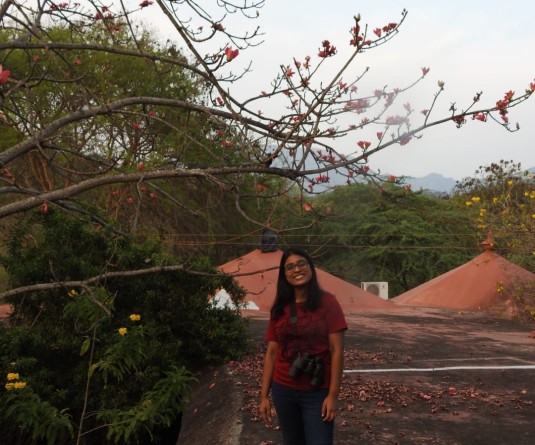
A proposal to establish a Legislative Council to check on the dictatorial tendencies of the Legislative Assembly
Yanpvuo Kikon (Yan)
When any problem arises, it is important to carry out a root cause analysis of the problem. This will not only help us in self-introspection but also give us a deeper understanding as to why such a major conflict exploded. If we analyse our political structure like how we software engineers identify a problem in our software application by using a technique called ‘debugging’, we use a very practical method of running through the entire software code line by line, identity the bugs in the code and then rectify the code to create a stable software application.
Using this same technique in the context of social and political science, if we try to debug the root cause of the current political imbroglio in Nagaland we can identify a number of bugs in our political structure which needs to be rectified in order to create a stable political system for our State. The problem which has been identified in our problem system is debugged as below:
There are two major power pillars in Naga society, namely the Legislators and the Tribal Leaders. At present, the power of legislation lies only with the legislators in the Nagaland Legislative Assembly (Vidhan Sabha/Lower House). Only the Nagaland Legislative Assembly has the power to create laws for the State as prescribed in the State List and also the power to use Article 371A through a resolution in the NLA to shield us from any Act of Parliament in the Union List/Concurrent List.
In the recent imbroglio which started off with the Tribal Representatives opposing Women Reservation and then the Land Tax and the ULB Act itself because of the apprehension with the legalities and conflicts of interest between Schedule IX, Article 243T and Naga Customary Laws protected by Article 371A of the Indian Constitution.
The major conflict of interest arose mainly due to differences between the two power pillars – NLA(Nagaland Legislative Assembly) and Tribal Leaders wherein the Legislative Assembly(Vidhan Sabha) led by the Chief Minister drifted towards a more dictatorial position this time by claiming to be vested with the full power by the Constitution to make and execute laws in the interest of the people without heeding to the wisdom of the elder ones. On the other hand, the Tribal Leaders resorted to crippling the Government machinery and complete shutdown of the State for more than 10 days now because of the simple fact that the Nagaland Legislative Assembly led by the Chief Minister did not include their demands in finalizing the Municipal Act and went ahead forcefully to conduct the elections.
Analysing the above tussle of power and conflicts of interest between the two entities, we can easily identify the bug in our existing political structure which gives full legislative powers only to the Nagaland Legislative Assembly and completely leaves out the Tribal Leaders from this legislation process.
Consultations were held but are meaningless if the official act of drafting the legislation is devoid of the aspirations of the Tribal representatives. The existing system will continue to be flawed and such conflicts will keep arising in the future unless the bug is fixed and the system is rectified.
As highlighted by Wapong Longkumer during our many online brain storming sessions in The Naga Blog, this debugging process has led to a problem within our political structure which could be rectified through a very special provision in our Constitution – Article 169 which states that the State Assembly simply needs to pass a resolution demanding the creation of a Legislative Council (Upper House) in addition to our existing unicameral system of having only a Legislative Assembly which has the tendency to become dictatorial as witnessed recently. The demand needs to highlight the special case in tribal states like Nagaland where the wisdom of Tribal leaders should be included in the legislative process.
The stability of a bicameral legislative system comes from the ability of the two houses to check each other's power. This prevents a dictatorship of the majority and avoids the passing of legislation based merely on popularity in the lower house but allows passing of quality legislation and ultimately avoid conflicts in the streets.
As of 2016, 7 out of 29 states in India have a bicameral system with a legislative council in addition to a legislative assembly. Members of Legislative Councils (MLC) are chosen from members of local bodies, wherein for Nagaland each Tribal Hoho can have at least one MNC at the Legislative Council. One-sixth of the members are nominated by the Governor from among those having substantial knowledge or practical experience in the field of arts, literature, science, social service, etc. Rest of the upper house members are chosen from graduates and teachers associated with academic institutions. For Nagaland, we can also include capable and eminent women leaders as MNC’s. The size of the Legislative Council cannot be more than one-third the membership of the Legislative Assembly. However, its size cannot be less than 40 members (except in Jammu and Kashmir, where there are 36 by an Act of Parliament).
All the civil unrest, burning of buildings and even the death of two young future leaders could have been averted if we had a political system which allowed the legislation passed in the Assembly to have official concurrence from an Upper House comprising of our Tribal Leaders and other wise leaders. Calling on Article 169 will in no way infringe upon Article 371A because, we already have the lower house in existence for over 50 years which has not infringed upon our Article 371A till date. The power of this Article has remained intact till today and will continue to protect our customary practices even in the future.
The political turmoil which we have witnessed today can also be resolved if the power of legislation is shared and checked legally between the elected legislators and the upper house, the tribal council.
The real purpose of a Council as the name itself suggests that it is the elder one who through their experience can act as the friend, philosopher and guide of the Legislative Assembly to bring in the element of WISDOM while drafting the most inclusive and effective legislations for the people. This will also avert conflicts to be witnessed in the streets and newspapers by converting them into civilized and productive arguments and debates in the legislative process. Most of the problems in our society arose because we installed an incompatible political system in our unique Naga society. Unlike other States, Nagaland has a unique history and culture and we require a political system which can allow a harmonious compatibility between our traditional system and the modern democracy to complement one another and allow progress by being strongly rooted in our Naga heritage.
Establishing the Legislative Assembly at the earliest in the honour of our three brothers who lost their lives will be the most sensible step to take in the road further ahead for Nagaland which will enable a civilized form of making laws in harmony and synthesis in the interest of the people.
Only trying to blame one another, finding fault and trying to prove ourselves right will lead us nowhere. What Naga people need right now is hope to pick up these pieces of broken dreams and work together to build ourselves a better tomorrow. We may have apprehensions but at this very moment each one of us need to look at the glass half full and try to take even one step forward towards building our dream Nagaland.





